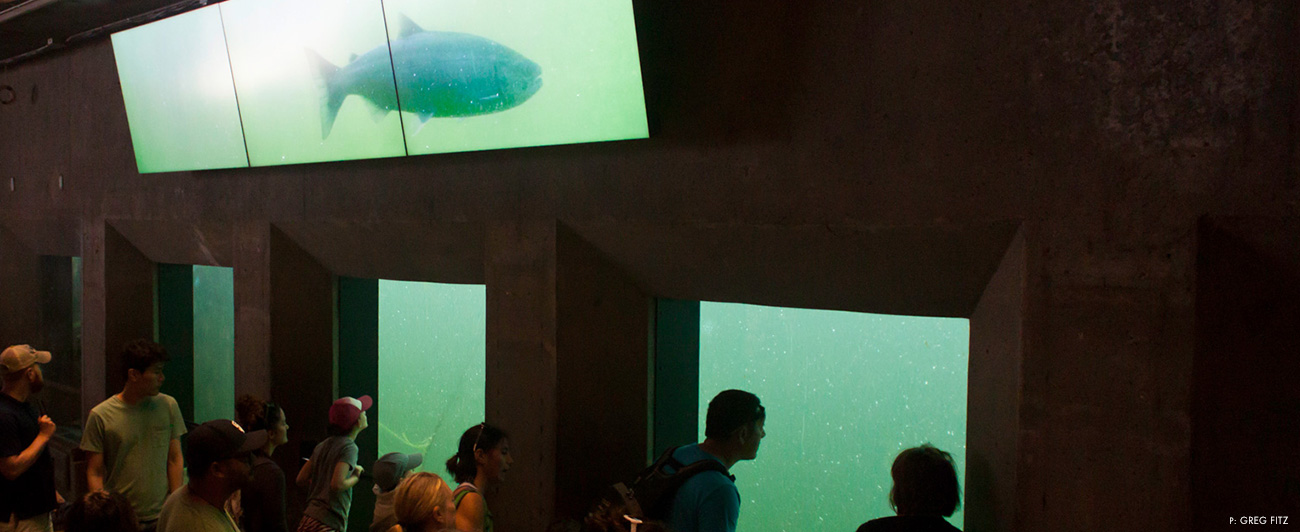Conservation
Empty Ladders
Virtual Salmon Migration in Seattle
The Hiram M. Chittenden Locks, locally called the Ballard Locks in reference to the adjacent harbor and neighborhood, are one of Seattle’s most popular tourist destinations. They were built over 100 years ago and are now listed on the National Registry of Historic Places. Every summer visitors from across the globe arrive to watch Chinook, coho and sockeye salmon swim through the fish ladder and underwater viewing windows during their spawning migration. They used to see steelhead, too, but they’ve been more or less gone for years now.
This past summer, there were hardly any salmon to see. It was one of the worst fish returns through the Locks since record keeping began.
The run numbers didn’t surprise me. I was struggling to catch a coho from the beaches of Puget Sound during the same time period. By August, Seattle newspapers, public radio and social media were discussing the terrible salmon counts. A number of articles featured photos of tourists looking at the empty fish viewing windows at the Locks, while an educational video about the life cycle of Pacific salmon played on large screens installed above. The image stunned me, so I went to see for myself.

above Going, going, gone are the days when the Hiram M. Chittenden Locks teemed with salmon.
The videos are well made and the footage is wonderful, but the first thing I thought of when I saw the photos was the original Bladerunner. In the movie, characters travel through a dark, dystopian future Los Angeles while giant, brightly colored advertising videos play on huge screens. As much as I appreciated the efforts of the Locks to communicate science and natural history in a compelling way, I couldn’t help but dread a future of empty concrete raceways and slow motion footage of beautiful, chrome fish who used to return there.
Those same tourists staring into empty tanks, either before or after a stop at the Space Needle, were likely also going to visit Seattle’s iconic Pike Place Market during their time in Washington. They wouldn’t want to miss a chance to see salmon carcasses thrown through the air by men dressed up in commercial fisherman cosplay and stand in line at the first Starbucks location for the same coffee they now drink in their hometown. Throughout the market they would also see heaping mounds of salmon stacked on crushed ice and I wonder how they reconcile that evidence of plenty with the experience of the empty Locks fish ladder. Maybe it is enough to know the fresh fish they are eating came from somewhere else. Maybe it is even “sustainable.”
Depending on where it came from, it might have been harvested responsibly… but that isn’t likely. Unless it was Bristol Bay sockeye—the reason to stop the Pebble Mine, incidentally—then it is probably fish from mixed stock fisheries where home water populations aren’t identified, or from places where escapement goals aren’t being met, or perhaps fisheries where excessive hatchery stocks allow for bycatch of wild fish. It’s all a damn mess and unless habitat is protected and restored, some dams are knocked down, and commercial harvest made more selective, then video footage of salmon ascending cold natal rivers will be all we have left. We’ll trade teeming watersheds for YouTube clips.
